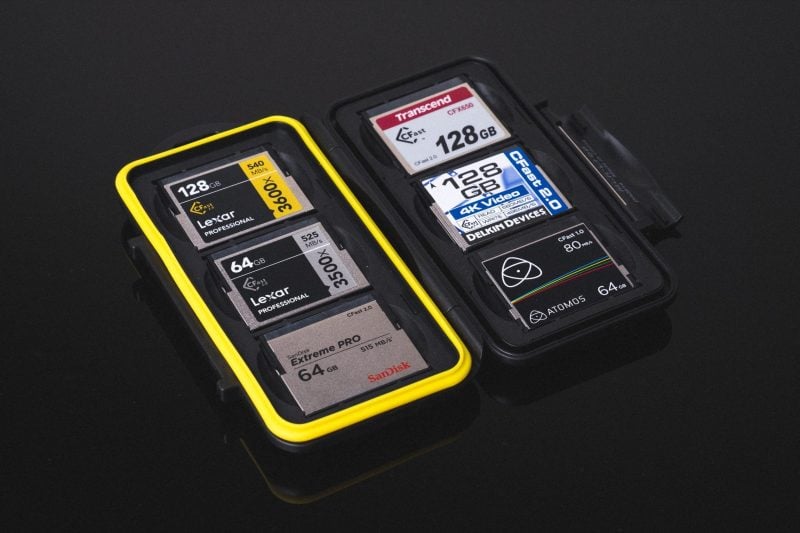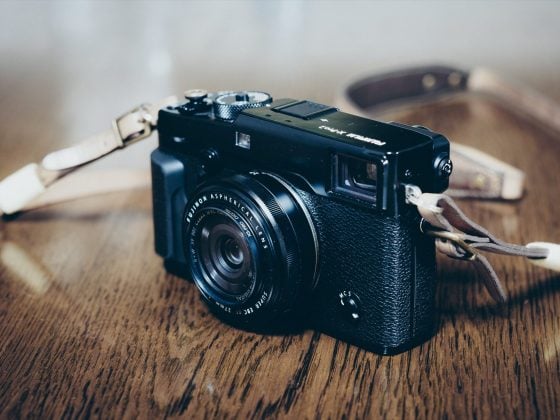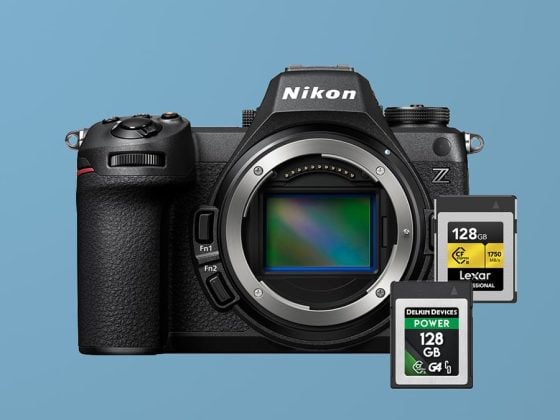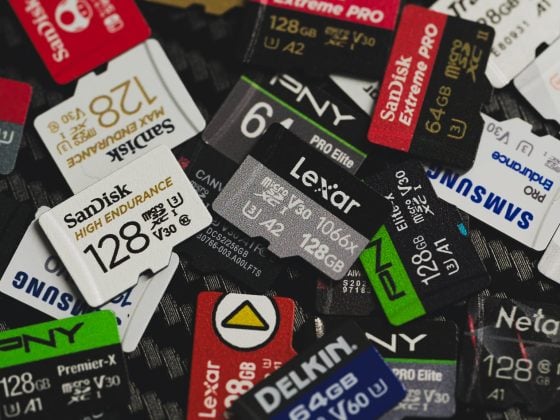CFast memory cards are high-performance storage devices commonly used in professional photography and videography. They are designed to provide fast and reliable data storage and transfer for cameras and camcorders that require high-speed data recording, especially for high-resolution photos and 4K or 8K video capture.
Fastest CFast Memory Cards – Benchmarks
To find the fastest CFast 2.0 memory cards we used a Lexar Thunderbolt reader using the USB 3.0 interface on a MacBook Pro using the AJA System Test.
The fastest card came out to be the Transcend 128GB card which has a read speed of 534.7MB/s and a write speed of 395.3MB/s which came out quite a bit faster than the Sandisk Pro when it came to writing speeds.
The second fastest card was the Lexar brand of cards.
CFast Speed Chart
| Memory Cards | Speed Class | Rated Write | Rated Read | Rated Sustained | Links | |||||
|---|---|---|---|---|---|---|---|---|---|---|
| CFast | ||||||||||
| Lexar Professional 3500x 256GB | CFast | 445 | 525 | B&H | ||||||
| Sandisk Extreme Pro 512/256GB/128GB | CFast | 450 | 525 | B&H | ||||||
| Sandisk Extreme Pro 64GB | CFast | 430 | 525 | B&H | ||||||
| ProGrade Cobalt 640/320GB | CFast | 520 | 550 | 470 | B&H | |||||
| Delkin Cinema 512GB/256GB | CFast | 495 | 560 | B&H | ||||||
| Angelbird AV Pro 1TB/512GB | CFast | 498 | 560 | 490 | B&H | |||||
| ARRI AV Pro 256GB | CFast | 450 | 550 | 430 | B&H | |||||
| RED 512GB | CFast | B&H | ||||||||
| Silicon Power CFX 310 512GB/256GB/128GB | CFast | 330 | 530 | B&H | ||||||
| Silicon Power CinemaX 256GB | CFast | 450 | 540 | B&H | ||||||
| Exascend CFX 256/128GB | CFast | 530 | 550 | 500 | B&H | |||||
| Exascend Z Cam 1TB/512/256/128GB | CFast | 500 | 520 | B&H | ||||||
| Exascend Archon 1TB/512 | CFast | 500 | 560 | 450 | B&H | |||||
| Wise Advanced 3500X 1TB/512GB | CFast | 450 | 525 | B&H | ||||||
| Wise Advanced 3400X 256GB | CFast | 450 | 510 | B&H | ||||||
| Transcend CFX650 256/128GB | CFast | 370 | B&H |
Key characteristics and features of CFast memory cards:
- Form Factor: CFast cards have a compact and rectangular shape, resembling CompactFlash (CF) cards. However, they are physically smaller and thinner than CF cards.
- Interface: CFast memory cards use the SATA III interface, which is the same interface commonly found in solid-state drives (SSDs). This allows for much faster data transfer speeds compared to older memory card formats.
- Speed: CFast cards are known for their high-speed data transfer rates, making them suitable for capturing high-resolution images and videos without buffering or lag. They can achieve read and write speeds well above 500MB/s in some cases.
- Capacity: These cards are available in a range of storage capacities, typically starting from 32GB and going up to several terabytes. The choice of capacity depends on your specific needs and the size of files you work with.
- Durability: CFast cards are designed to be rugged and durable, capable of withstanding the demands of professional use, including extreme temperatures and physical shocks.
- Compatibility: It’s important to note that CFast cards are not universally compatible with all cameras. Many high-end professional cameras and camcorders are equipped with CFast card slots, but it’s essential to check your device’s compatibility before purchasing a CFast card.
Frequently Asked Questions
If you have any questions I’ll do my best to answer them in the comments. But for now, these are some popular questions I get asked.
What’s The Fastest CFast Card?
Right now on the MacBook Pro with the Thunderbolt connection, it’s the Transcend. However, on your device, you’ll likely get similar results with the Lexar cards.
Are Cheap CFast Cards Any Good?
They can be good, but it doesn’t mean they’ll be fast. In other words, if you need to save some cash and you don’t need to read or write at 300MB/s, then some of the slower cards or even CFast 1.0 cards might be fine for you. Just be sure to check compatibility with what you’re using.
Should I Buy One Big CFast Card Or Several Smaller Cards?
This is a really popular question and there is a correct answer – it depends. The philosophy is that it’s better to buy a few smaller cards than one big card.
That is of course if the smaller card is going to meet your needs. The idea behind this is that if you have your media from a shoot spanned across several cards and one of those cards starts going bad or having issues, it will only corrupt the data contained in that one card. It will also be easier and cheaper to replace it later.
This happens with even the best cards and unfortunately, I do get those emails from people who have had cards get corrupted and they have to send the card to data recovery specialists. I have also had issues with cards and it’s not fun.
I’ve also talked to photographers who have used several small cards on their trips and shoots and have lost one after filling it with a full day of shooting.
Today I’m in the camp of just having one big card.
Finding The Best CFast Memory Cards For Your Camera
Since testing CFast memory cards is very difficult in cameras that don’t shoot insanely fast burst rates like the Canon 1DX II, I’ve put together a benchmark of how the CFast memory cards perform in a PC.
You can use this list or see how they perform in the Canon 1DX II to get a sense of which Cfast cards are the best for your camera.
List of cameras that support CFast memory cards
Canon 1DX II
Canon XC10 4K
Canon XC15 4K
Canon XC10E 4K
Canon C300 Mark II
Phase One can also be equipped to use CFast cards, as well as many cinema cameras.
Best CFast 2.0 Memory Cards – The Bottom Line
When choosing a CFast memory card, consider factors like capacity, speed, and compatibility with your camera. Make sure it meets your specific needs for photography and video projects. And always remember to back up your precious data regularly, no matter how reliable your memory card is!
| **This website contains affiliate links. We will earn a small commission on purchases made through these links. Some of the links used in these articles will direct you to Amazon. As an Amazon Associate, I earn from qualifying purchases. |







